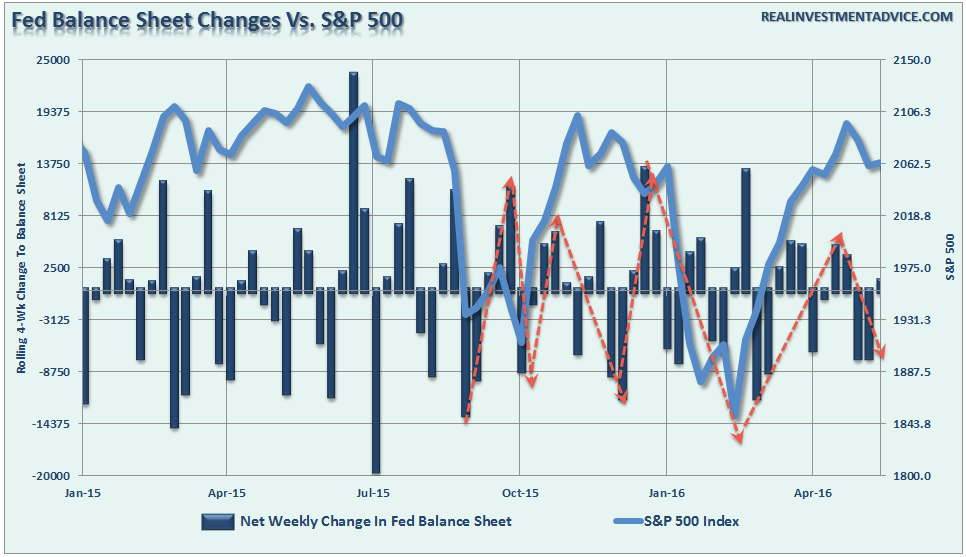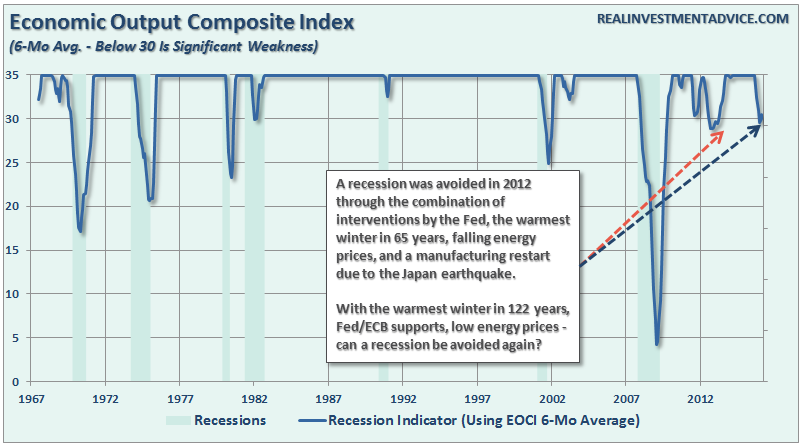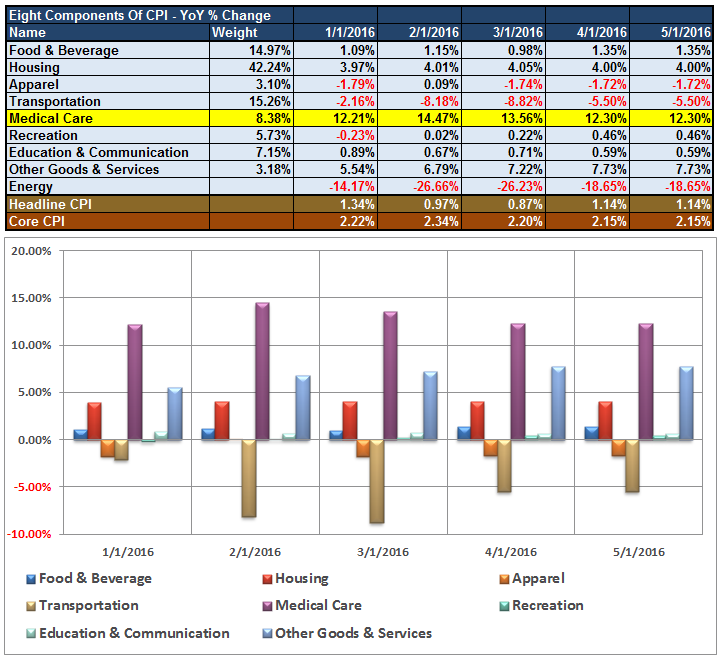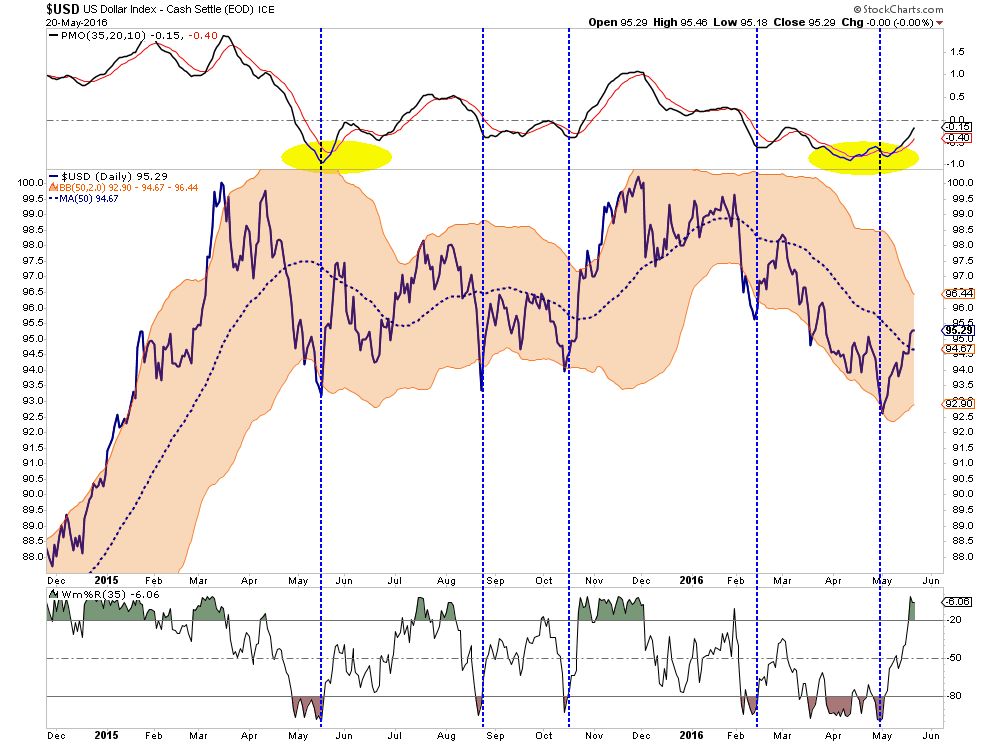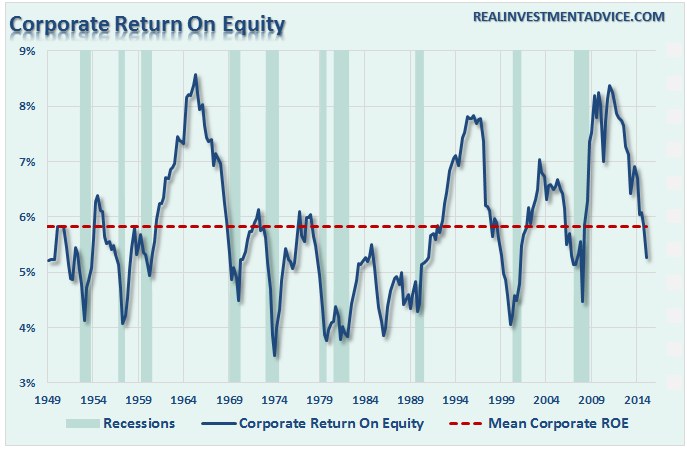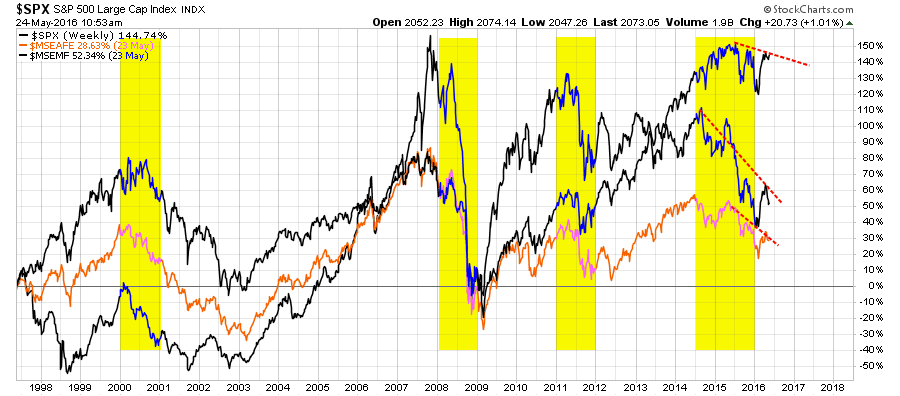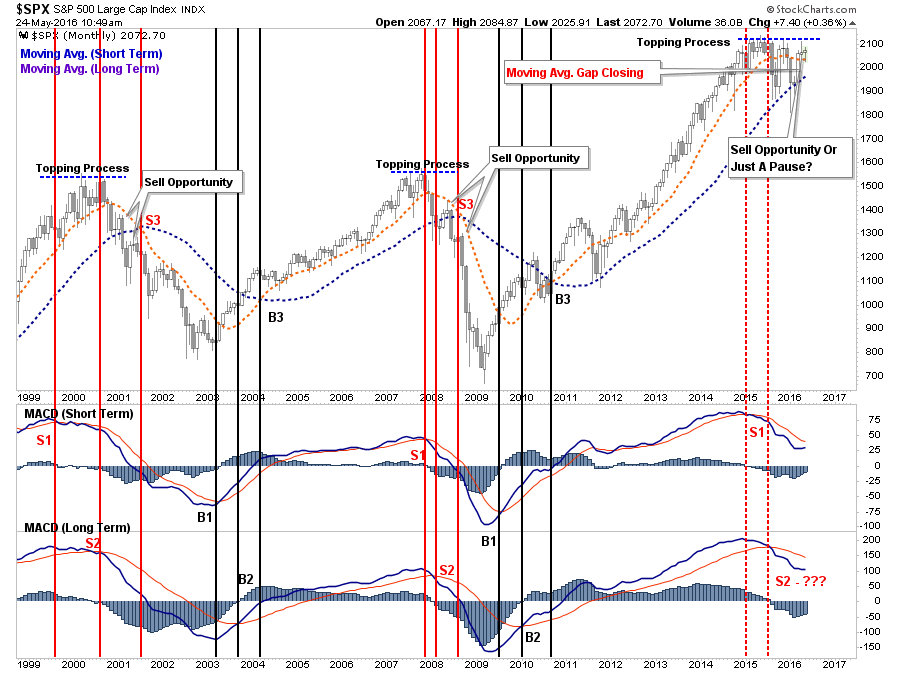Over the last several weeks, I have discussed the market's entrance into the “Seasonally Weak” period of the year and the breakout of the market above the downtrend line that began last year.
The rally from the February lows, driven by a tremendous amount of short covering, once again ignited “bullish optimism”.
Canaccord Genuity’s Tony Dwyer estimates the equity benchmark will end 2017 at 2,340, an increase of 15 percent from Wednesday’s closing level of 2,047.63, with half of the gains coming this year. -- Bloomberg
But it is not just Tony that is buying into the “optimistic” story, but investors also as the number of stocks on “bullish buy signals” has exploded since the February lows.
While the “bulls” are quick to point out the current rebound much resembles that of 2011, I have made notes of the differences between 2011 and 2008. The reality is the current market set up is more closely aligned with the early stages of a bear market reversal.
It is the last point that I want to follow up with this week.
There is little argument that the bulls are clearly in charge of the market currently as the rally from the recent lows has been quite astonishing. However, as I noted recently, the current rally looks extremely similar to that seen following last summer’s swoon.
Well, here we are once again entering into the “seasonally weak” period of the year. Will the bullish hopes prevail? Maybe. But.
Warning Signs Everywhere
Many have pointed to the recent correction as a repeat of the 2011 “debt ceiling default” crisis. Of course, the real issue in 2011 was the economic impact of the Japanese tsunami/earthquake/meltdown trifecta, combined with the absence of liquidity support following the end of QE-2, which led to a sharp drop in economic activity. While many might suggest that the current environment is similar, there is a marked difference.
The fall/winter of 2011 was fueled by comments, and actions, of accommodative policies by the Federal Reserve as they instituted “operation twist” and a continuation of the “zero interest rate policy” (ZIRP). Furthermore, the economy was boosted in the third and fourth quarters of 2011 as oil prices fell, Japan manufacturing came back on-line to fill the void of pent-up demand for inventory restocking and the warmest winter in 65 years, which gave a boost to consumers wallets and allowed for higher rates of production.
2015-16 is a much different picture.
First, while the Federal Reserve is still reinvesting proceeds from the bloated $4 Trillion balance sheet, which provides for intermittent pops of liquidity into the financial market, they have begun to “tighten” monetary policy by ending QE3 and increasing the overnight lending rate. As shown below, the changes to the Fed’s balance sheet is highly correlated to the movements of the S&P 500 index as liquidity is induced and extracted from the financial system.
Secondly, despite hopes of stronger rates of economic growth, it appears that the domestic economy is weakening considerably as the effects of a global deflationary slowdown wash back onto the U.S. economy.
Third, while “services” seems to be holding up despite a slowdown in “manufacturing”, the service sector is being obfuscated by sharp increases in “healthcare” spending due to sharply rising costs of healthcare premiums. While the diversion of spending is inflating the services related part of the economy, it is not a representation of a stronger “real” economy that creates jobs and increased wages.
Fourth, the US dollar, as I addressed in this past weekend’s missive, is back on the rise.
Well, with the revelation of the recent FOMC minutes the worries about a June rate hike, as suspected, have indeed surfaced sending the US dollar spiking above resistance.
If the Fed hikes rates in June, as is currently expected, higher rates will attract foreign money into US Treasuries in search of a higher yield. The dollar will subsequently strengthen further impacting commodity and oil prices, as well as increase the drag on companies with international exposure. Exports, which make up more than 40% of corporate profits, are sharply impacting results in more than just “energy-related” areas. This is not just a “profits recession”, it is a “revenue recession”, which are two different things.
Lastly, it is important to remember that US markets are not an “island”. What happens in global financial markets will ultimately impact the U.S. The chart below shows the S&P 500 as compared on a performance basis to the iShares MSCI Emerging Markets (NYSE:EEM) and Developed International indices. Notice the previous correlation in the overall indices as compared to today. Currently, the weakness in the international markets is being dismissed by investors, but it most likely should not be considering the ECB’s recent “bazooka” of QE, which has clearly failed.
Lack Of Low Hanging Fruit
As I suggested previously, the “seasonally weak” period of the year may be a good opportunity to reduce risk as we head into the “dog days of summer.”
Does this absolutely mean that markets will break to the downside and retest February lows? Of course, not. However, throw into the mix ongoing high-valuations, uncertainty about what actions the Federal Reserve may take, ongoing geopolitical risks, concerns over China, potential for a stronger dollar or further weakness in oil – well, you get the idea. There are plenty of catalysts to push stocks lower during what is typically an already weak period.
Should you ‘sell in May and go away?’ That decision is entirely up to you. There is never certainty in the market, but the deck this summer seems much more stacked than usual against investors who are taking on excessive equity based risk. The question you really need to answer is whether the ‘reward’ is really worth the ‘risk?’
While the recent rally has certainly been encouraging, it has failed to materially change the underlying momentum and relative strength indicators substantially enough to suggest a return to a more structurally sound bull market. (valuations not withstanding)
With price action still confirming relative weakness, and the recent rally primarily focused in the largest capitalization based companies, the action remains more reminiscent of a market topping process than the beginning of a new leg of the bull market. As shown in the last chart below, the current “topping process”, when combined with underlying “sell signals”, is very different than the action witnessed in 2011.
While I am not suggesting that the market is on the precipice of the next “financial crisis”, I am suggesting that the current market dynamics are not as stable as they were following the correction in 2011. This is particularly the case given the threat of a “tightening” of monetary policy combined with significantly weaker economic underpinnings.
The challenge for investors over the next several months will be the navigation of the “seasonally weak” period of the year against a backdrop of warning signals. Importantly, while the “always bullish” media tends to dismiss warning signs as “just being bearish,” historically such unheeded warnings have ended badly for individuals. It is my suspicion that this time will likely not be much different, the challenge will just be knowing when to leave the “party.”
You get recessions, you have stock market declines. If you don’t understand that’s going to happen, then you’re not ready, you won’t do well in the markets. -- Peter Lynch



